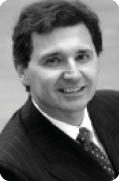
Picasso and Cézanne were both great artists, yet the manner by which they produced their final masterpieces could not be more different. I think that ophthalmologists can be a little bit like Picasso or a little bit like Cézanne, and I will explain below why I believe this to be true. But first, I want to talk about a lesson we can learn from the car industry.
As early as 2009, owners of Toyota and Lexus cars began reporting unintended acceleration—the accelerator pedal becoming stuck in a partially depressed position.1 Despite the so-called evidence in the class action lawsuit and admission of guilt from the car manufacturer (which resulted in Toyota paying a fine of US$1.2 billion and settling more than 400 private law suits), some car experts disputed the claims. In an attempt to prove the evidence false, they showed that brakes always beat engine power, no matter how powerful the engine or how fast the car was moving. In their tests, while driving at full speed and simultaneously depressing the brake, the car would come to a halt. This was true each and every time, during multiple car tests.
If there was nothing wrong with the accelerator pedals, what was the underlying cause of the unintended accelerations reported by Toyota and Lexus car owners? In these instances, the driver mistakenly pushed the accelerator instead of hitting the brake. As the car went faster, the myth that the brakes had failed was further perpetuated and ingrained in the panic-stricken mind of the driver. If all the driver had done was hit the brake pedal—even without taking the other foot off the accelerator—none of these fatal accidents would have occurred.
How many accidents have been blamed on the technology when it was the driver’s fault? Almost everyone in that situation—believing that they were pushing down as hard as they could on the brakes but mistakenly pushing the accelerator—would have responded the exact same way: by not taking their foot off the accelerator and placing it on the brake. Scary thought, to state the obvious, and so easy to happen.
If that can happen while we are driving, is there any reason that it could not happen while we are doing surgery? Many of our surgical devices are operated by footpedals. We need to be aware of how easily this type of error can occur and to know that, when things are not going as expected, we must stop and think first. Then, after a short pause, make sure we know exactly where we are in the surgical procedure. We should also be much slower to blame the equipment until we have exhausted all possibility of human error.
Back to Picasso and Cézanne, both undeniably geniuses. Picasso, an example of a conceptual innovator, could create his masterpieces within an incredibly short amount of time—sometimes as brief as 15 minutes. Cézanne, on the other hand, who was never finished with his masterpieces, would be regarded as an experimental innovator. He was known to discard paintings that others might have considered masterpieces simply because they did not match his own mental picture. He would toil away and try to improve the artwork.
I have known ophthalmologists in both categories, too: one exceptional in the brevity of the procedure time and the other in the continual will to improve; one with a genius idea that is suddenly thrust upon the ophthalmic community, the other offering continual small incremental contributions.
With art, it may be difficult to combine the two approaches, but, in ophthalmology, there may well be some scope. “Slow down to hurry up” is a well-known and apt phrase when it comes to learning ophthalmic microsurgery. Taking our time to learn the correct surgical techniques, thereby reducing complications, ultimately saves us time. So, with meticulous attention to detail and by making each surgical move precisely and deliberately, we continually reduce our surgical time.
Yet the primary aim is not to reduce surgery time, but rather to make each step precise. Thus, ultimately, we reap the reward of reduced surgery time. Patients do not care how fast the procedure was, but only about how well it was done.
In conclusion, try to make your work a masterpiece each and every time. Get to know your equipment and take ultimate responsibility. Try this approach and make your assault on genius.
— Arthur B. Cummings, MB ChB, FCS(SA), MMed(Ophth), FRCS(Edin)
Associate Chief Medical Editor
1. ABC News website. Ross B, Rhee J, Hill AM, Chuchmach M, Katersky A. Toyota to pay $1.2B for hiding deadly ‘unintended acceleration.’ http://abcnews.go.com/Blotter/toyota-pay-12b-hiding-deadly-unintended-acceleration/story?id=22972214. Accessed March 6, 2017.


